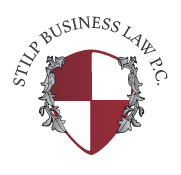Thomas Stilp, JD, MBA/MM, LLM, MSC
After a meeting is over, everyone goes back to what they were working on before the meeting. The goal following a meeting? To create a record (called “minutes”) to remind everyone what needs to happen next, have people feel their meeting time was well spent, and assign “action items” to specific people.
Years ago, as a young attorney, I had the task as “Secretary” of many client corporations to summarize voluminous information for quick and efficient recall later.
Although a dry topic, the ability to produce clear and concise meeting minutes will save time and make future meetings more efficient.
After hundreds of meetings, here are a few tips – follow these steps to produce clear, concise and effective minutes:
- Use the agenda. Use the Agenda for the meeting as the roadmap – that’s easiest.
- Gather materials. Pull together the agenda, notes, any reports or documents that were distributed at the meeting.
- Create a draft within 24 hours, while the information is fresh in your mind. If you used your laptop to take notes, it won’t take a lot of time to type draft minutes.
- Double or Triple space your minutes. That way, handwritten corrections can be easily and clearly inserted through interlineations when minutes are circulated for comment.
- Include any attachments. It’s confusing and frustrating to have minutes refer to a document that is not included. Better include documents as attachments. Paper is cheap – people’s time is not.
- Action Items. Simply put, “action items” are things that need to get done – those items should have been discussed and identified at the meeting. Include the “action items” in the minutes.
- Assign Action Items. Identify the people who have been assigned action items. Again, those assignments should have been made at the meeting. If not, the minutes should help identify missing assignments.
- Send a draft. If the minutes are long, send a draft and ask for review. This gives people a chance to clarify or to add an important point.
- Prepare to make corrections. After you’ve spruced up your notes and formatted the document, you’ll need to make sure all corrections are made to the final version before filing it as a formal record. Keep copies of your drafts. Seems obvious, but as a law professor once told me, “elucidate the obvious.”
- Keep the record. Minutes won’t do any good unless they are kept as a record and can easily be found and circulated before the next meeting. Keep minutes in chronological order. Maintain an index of everything in one place. When you are filing the minutes, make sure to include all handouts and the agenda.
Well-taken and well-kept minutes are a great way to measure progress. I often review minutes/notes from a meeting several months ago to see whether the items discussed have been accomplished.



